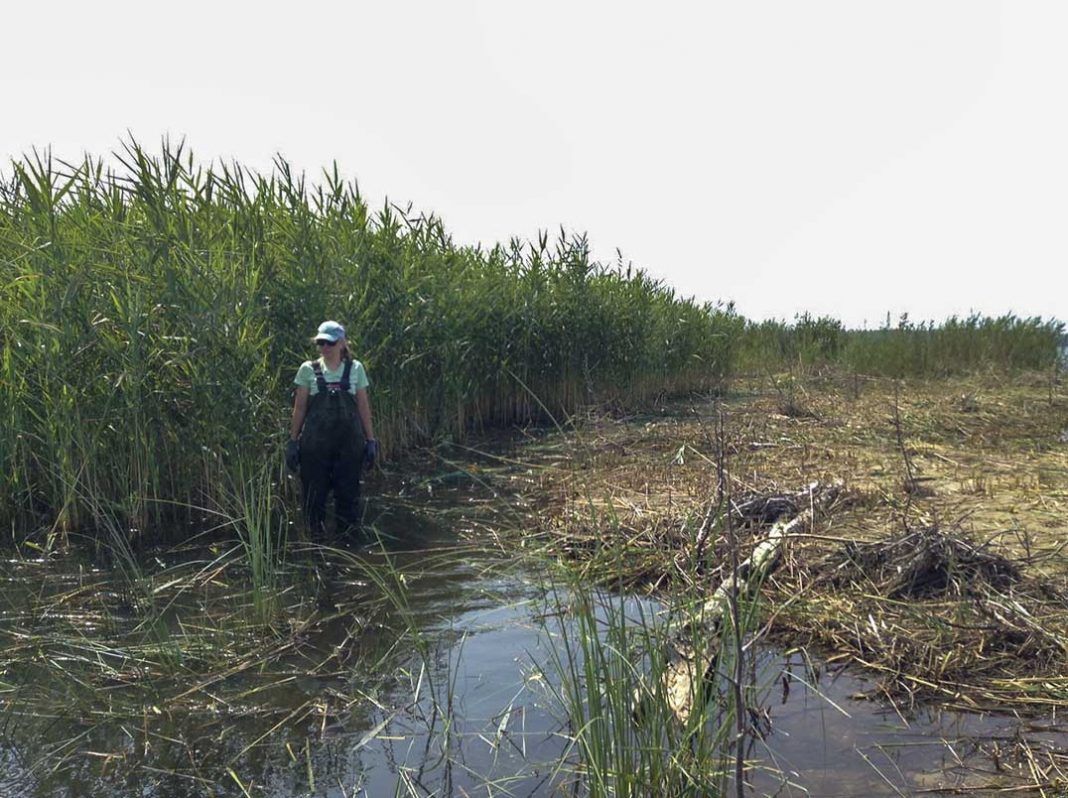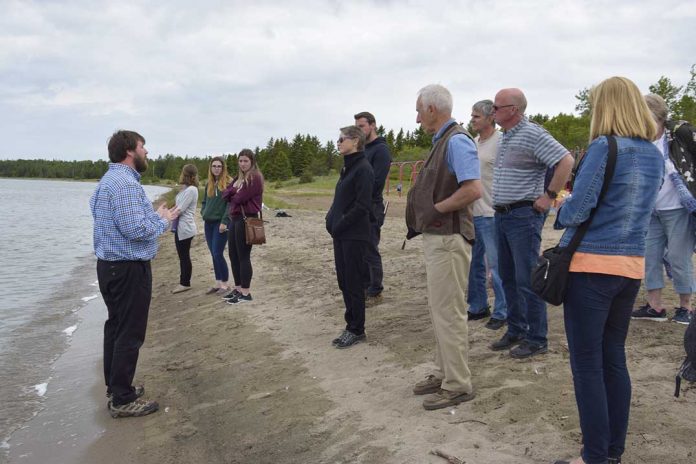MANITOULIN—Manitoulin Phragmites Week starts on Saturday and will see volunteers across Manitoulin engaging in a continued push to eradicate and manage what’s been called Canada’s worst invasive plant, one which has taken over and devastated shore areas across the nation.
“Our goal is to get (phragmites) under control enough so that managing it becomes a little annual task,” says Judith Jones, head of the Manitoulin Phragmites Project.
She adds that Manitoulin will always have phragmites, but if it is eradicated en masse then the amount of work to remove the few plants that grow every year will be minimal, similar to an annual eavestrough cleaning endeavour.
Phragmites is a very aggressive, tall European grass that spreads quickly on shorelines and wetlands. Its presence can destroy fish spawning habitats, choke out native plant species, block wildlife from passing through because of its dense masses and impact water quality. If it grows in municipal wastewater lagoons it can mean expensive bills to taxpayers to correct the damage. Its presence also affects property values because, as Ms. Jones says, “who wants a cottage with no beach?”
Her project is a three-year undertaking and includes Cockburn Island within its scope. Beyond hands-on work to eliminate the plant, it also seeks to educate landowners on how to spot phragmites and effectively eradicate it if they find it on their own properties. This is something that is uniquely accessible in this region, according to Ms. Jones.
“We want everybody to go at this work together, and we can do that here on Manitoulin,” she says. “There’s lots of neighbours who are willing to go and work together.”
Manitoulin Phragmites Week has a two-fold purpose above and beyond the project’s regular on-the-ground work to remove the plants. It also serves to raise awareness that the problem exists, inform people about what they can do to thwart the plant and encourage people to get involved with work events held especially for the commemorative week.
Based on the results, the project seems to be fulfilling its mandate. The project usually results in a 75 percent reduction in its first year of operation.
“There’s hardly any left on the south shore; it’s all under control. We’re now handing off the care of that to landowners,” says Ms. Jones. “Once they know what to look for, they can get it before it does any harm.”
There are work bees arranged all over Manitoulin for people to get involved and help to remove the plants, as well as informative slide presentations about the problem and a demonstration session to teach people how they can manage phragmites on their own property. However, the project may be working a tad too well, as Ms. Jones says arranging demonstrations has proved to be a challenge this year.
“We’ve had really good success with the project to the point that we’re struggling to find demo spots because all the easy-to-access sites are (cleared of phragmites),” Ms. Jones says.
This year’s season will see five days of specialized Truxor cutting machines working at the worksites needing the most attention. Three of the Truxor days will be dedicated to the Blue Jay Creek and two will be dedicated to the north end of South Bay.
In South Bay, there is still an abundance of phragmites. Ms. Jones says that site remains a main focus of the group’s efforts with the ultimate goal being to reach eradication status just as has been done on the entirety of the south shore except a couple of isolated patches in Michael’s Bay and Burnt Island.
Ms. Jones encourages everyone to take a closer look at phragmites next week and find out how they can play a part in preventing this pervasive plant from proliferating. A copy of the schedule is on Page 23 of this newspaper.
As for the future of the project once the funding cycle ends this year, Ms. Jones says the way forward is less clear.
“It’s been so successful and we’re so close to getting everything done so I’d like to keep it going,” she says. “But I’m doing some soul-searching right now to see what the future may hold.”




